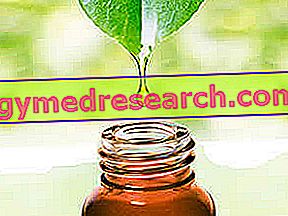
What is Orfadin?
Orfadin is a medicine that contains the active substance nitisinone and is available as white capsules (2, 5 and 10 mg).
What is Orfadin used for?
Orfadin is used to treat hereditary tyrosinemia of type 1 (HT-1). It is a rare childhood disease in which the body fails to completely degrade the amino acid tyrosine. As a result, harmful substances are formed and accumulate in the body, causing severe liver problems and liver cancer in young children. Orfadin is given on a diet low in amino acids tyrosine and phenylalanine.
Because the number of patients with HT-1 is low, the disease is considered "rare" and Orfadin was given the status of an "orphan medicine" (a medicine used for rare diseases) on 29 December 2000.
The medicine can only be obtained with a prescription.
How is Orfadin used?
Treatment with Orfadin should be started and monitored by physicians experienced in the treatment of patients with HT-1. Treatment should be started as soon as possible and the dose of Orfadin should be adjusted depending on the patient's response and body weight.
The recommended initial dose is 1 mg per kilogram of body weight divided into two doses. The capsules are normally swallowed whole, but can be opened and the contents mixed in a small amount of water or food, which must be swallowed immediately. Orfadin is indicated for long-term use. Patients should be monitored at least every six months.
How does Orfadin work?
Tyrosine is metabolized in the body by different enzymes. Patients with HT-1 lack one of these enzymes, so tyrosine is not adequately eliminated in their body, but is transformed into harmful substances. Nitisone, the active ingredient in Orfadin, inhibits an enzyme that converts tyrosine into harmful substances. However, since tyrosine remains in the body during treatment with Orfadin, patients must follow a special diet poor in tyrosine. The diet must also be poor in phenylalanine, as it is converted into tyrosine in the body.
What studies have been carried out on Orfadin?
The largest study of Orfadin was performed on 257 patients in 87 hospitals in 25 countries, as part of a "compassionate use" program. This is a program in which doctors can request a drug for a patient before it is finally authorized. The study looked at the effect of Orfadin on survival and compared it with reports published in medical journals describing survival in patients with HT-1 and treated only with a modified diet.
What benefit has Orfadin shown during the studies?
The main benefit of Orfadin is to considerably increase life expectancy. For example, a child under two months with HT1 would normally only have a 28% chance of surviving five years by following only the diet. By adding Orfadin to the therapy, the survival rate reaches 82%. The sooner therapy is started, the greater the chance of survival.
What is the risk associated with Orfadin?
The most common side effects with Orfadin (seen in between 1 and 10 patients in 100) are thrombocytopenia (low blood platelet count), leukopenia (low white blood cell count), granulocytopenia (low granulocyte level, a type of white blood cell in the blood), conjunctivitis (inflammation of the membrane that covers the eyelid), opacity of the cornea (clouding of the cornea, the transparent layer in front of the pupil), keratitis (inflammation of the cornea), photophobia (increased sensitivity of the eyes to light) and pain eyepieces. Many of these symptoms can be due to high levels of tyrosine caused by an inadequate diet of patients. For the full list of all side effects reported with Orfadin, see the Package Leaflet.
Orfadin must not be used in people who are hypersensitive (allergic) to nitisinone or other ingredients in the medicine.
Why has Orfadin been approved?
The Committee for Medicinal Products for Human Use (CHMP) found that Orfadin appears to be an effective treatment for HT-1, particularly if started early before the patient's liver is too damaged. Orfadin also gives better results for patients than the results obtained with the modified diet alone reported in the literature. The CHMP therefore decided that Orfadin's benefits are greater than its risks for the treatment of patients with a confirmed diagnosis of HT-1 in combination with a diet low in tyrosine and phenylalanine. The Committee therefore recommended that Orfadin be given marketing authorization.
More information on Orfadin
On 21 February 2005, the European Commission granted a marketing authorization for Orfadin, valid throughout the European Union, to Swedish Orphan International AB.
Initially, Orfadin was authorized in "exceptional circumstances" because, since the disease is rare, little information was available at the time of approval. As the company provided the additional information requested, the condition referring to "exceptional circumstances" was removed on 21 September 2009.
For a summary of the opinion of the Committee for Orphan Medicinal Products on Orfadin click here.
The full EPAR for Orfadin can be found here.
Last update of this summary: 07-2009.



